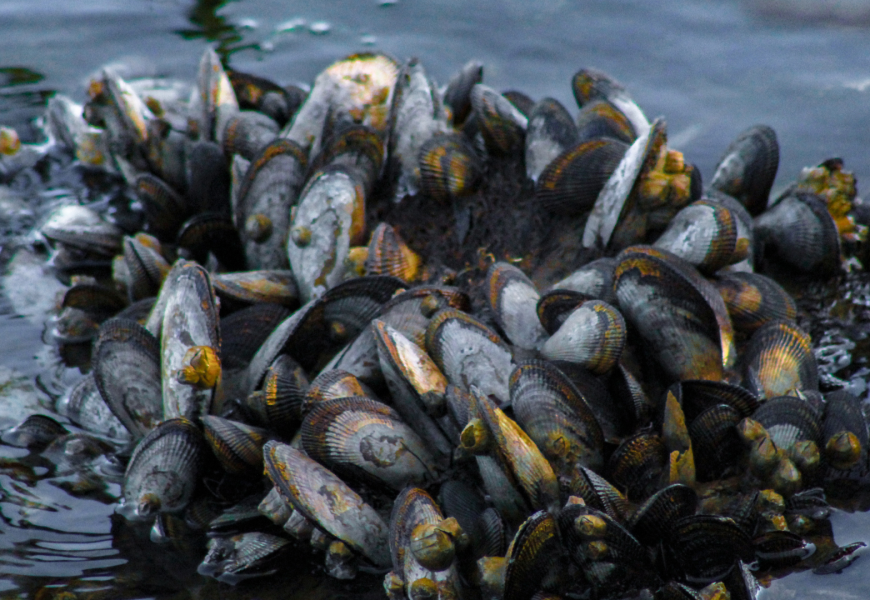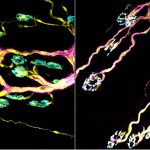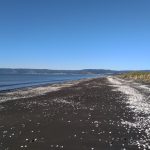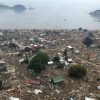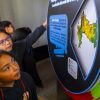Universidad de Concepción has always known for contributing to the leadership in decentralization. It has created the UdeC Biotoxin Laboratory, or LBTx-UdeC, dedicated to the detection and analysis of
biotoxins in samples of shellfish and other seafood for domestic consumption and export, and it is the first of its kind in the Biobío Region.
By Paúl Gómez / paulgomez@udec.cl / Photographs: LBTx-UdeC
A team from the Oceanography Department of the Faculty of Natural and Oceanographic Sciences, formed by Allisson Astuya Ph.D., who is also a researcher of the COPAS Sur-Austral
Centers, and the recently created COPAS COASTAL, Alejandra Llanos Ph.D. and Fernando Cruzat Ph.D., took on the mission to lead a laboratory in the Biobío Region to detect marine toxins, given the growing threat of Harmful Algal Blooms (HAB) in the area. Dr. Astuya stated that “decentralizing the detection of marine toxins and strengthening local certification was the driver behind the laboratory’s implementation. On there not being either infrastructure or the necessary equipment in the region, samples had to be sent to other regions, typically the Metropolitan. By
implementing it here, resources and time that can speed up possible and necessary decision-making are saved, something that is key when considering HABs, known as red tide events.
The Biotoxins Laboratory, or LBTx-UdeC, was financed through the Innovation Fund for Regional Competitiveness (FIC-R, in Spanish) of the Biobío Regional Government, and accredited under the
ISO 17025 Standard by The International Accreditation Service (IAS).
But, why have a biotoxin laboratory in the Biobío Region, considering that there are no red tide cases there? The bloom of Alexandrium catenella was described in the western Magellan Strait at the start of the 1970s and has progressed north through Chilean Patagonia, ending up in the catastrophic event around the island of Chiloé in 2016. This change has taken place along coastal areas with low human population density and, hence, it is unlikely that the eutrophication driven by anthropogenic factors is significantly involved in it, at least in the south. However, human activities, like salmon farming, can play a role in the intensification of blooms in the more
densely populated areas of northern Patagonia, and even beyond it.
In this regard, the reality is that the Biobío Region has detected the presence of toxin-producing microalgae, but on there not being the conditions for their growth, this has not triggered HABs yet and thus is not a problem up to now. However, this does not mean that the need to analyze products should be postponed, nor the study of potential HABs when facing phenomena like the beaching of organisms or the belief that these natural phenomena could never happen. The
LBTx-UdeC team considers that we have to be prepared, given that the environmental conditions have been changing, which could foster the appearance of harmful phenomena.
Currently, LBTx-UdeC offers the detection service for Paralytic Shellfish Poisoning (PSP) and Amnesic Shellfish Poisoning (ASP), using the official analytical methods, along with in vitro screening for lipophilic toxins, especially Diarrhetic Shellfish Poison (DSP).
LBTx-UdeC has associated units, like the in vitro Bio-testing Area (fish and mammal cells); the in vivo Bio-testing Area (zebrafish and other sea species of interest, led by Alejandra Llanos Ph.D.) to
study the effects and action mechanisms of emerging ichthyotoxins and toxins of interest, not regulated by the Chilean legislation; the Molecular Biology Area, led by Fernando Cruzat Ph.D., focuses on the development of microalgae molecular markers related to harmful algal blooms
(HAB), and complementary biomarkers for the in vivo and in vitro biotests; as well as the Bioprocessing Area, for the scaling of toxic microalgae growth for research purposes.
In 2022, LBTx-UdeC is expected to join the network of laboratories in Chile that are capable of analyzing red tide toxins present in shellfish samples. For this, a joint project will be set up with the Fishing Development Institute (IFOP, in Spanish) for monthly sampling and sample
management, especially in the region. Other lesser-known or emerging (ichthyotoxins) will be studied, using cellular biotests (fish and mammal cells), and zebrafish as a biological model. “We
expect that the application of our technology has an impact on public services through the Health Service (Local Health Authority) and the IFOP/Sernapesca services for natural resources and fishing, which safeguard health, and food biosafety and innocuousness. A HAB early warning
system based on LBTx-UdeC’s achievements is expected to be implemented with these institutions”, Dr. Astuya highlights.
For more information: aastuya@udec.cl and biotoxinasudec.cl
Last modified: 29 de agosto de 2025
